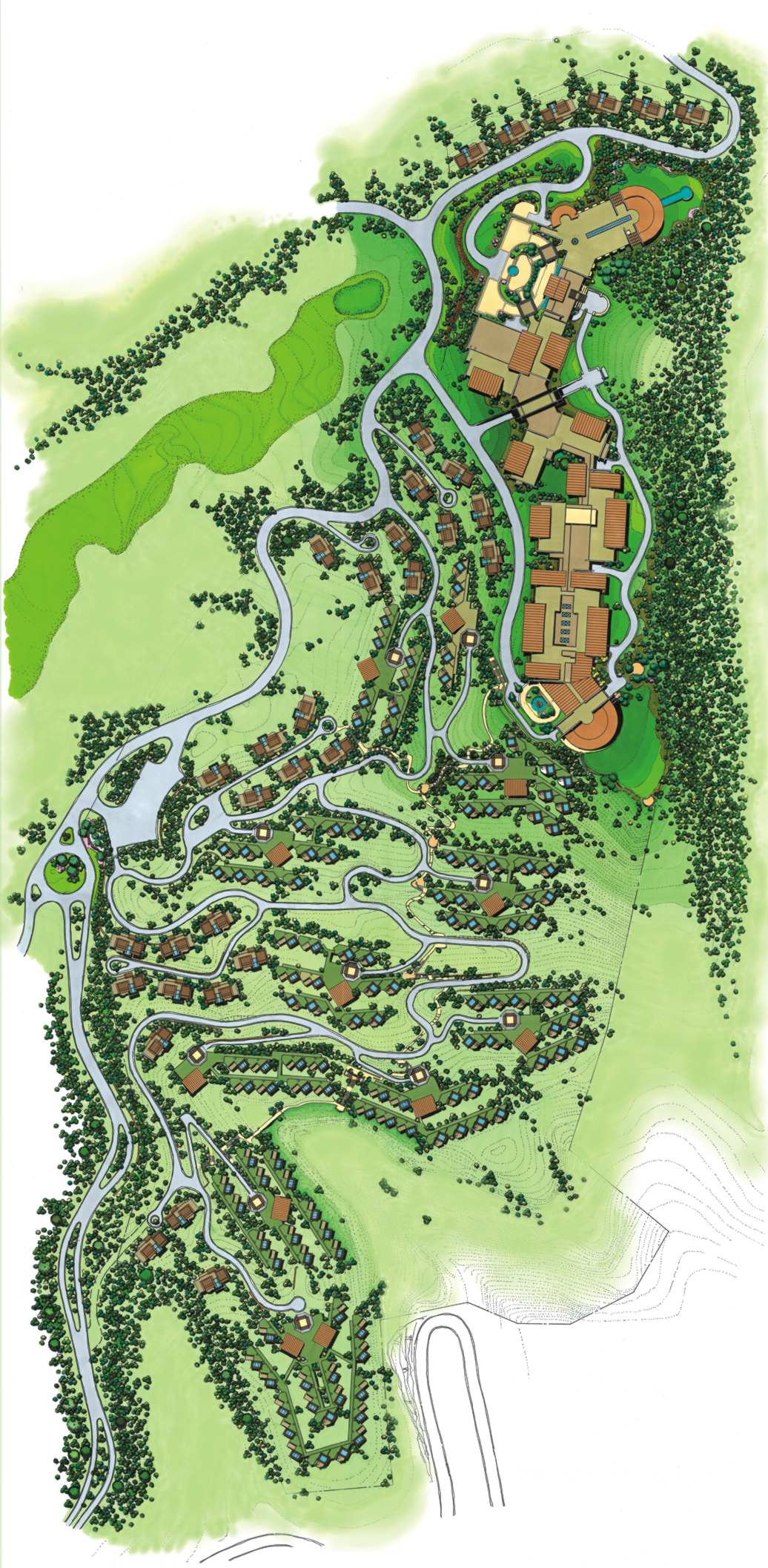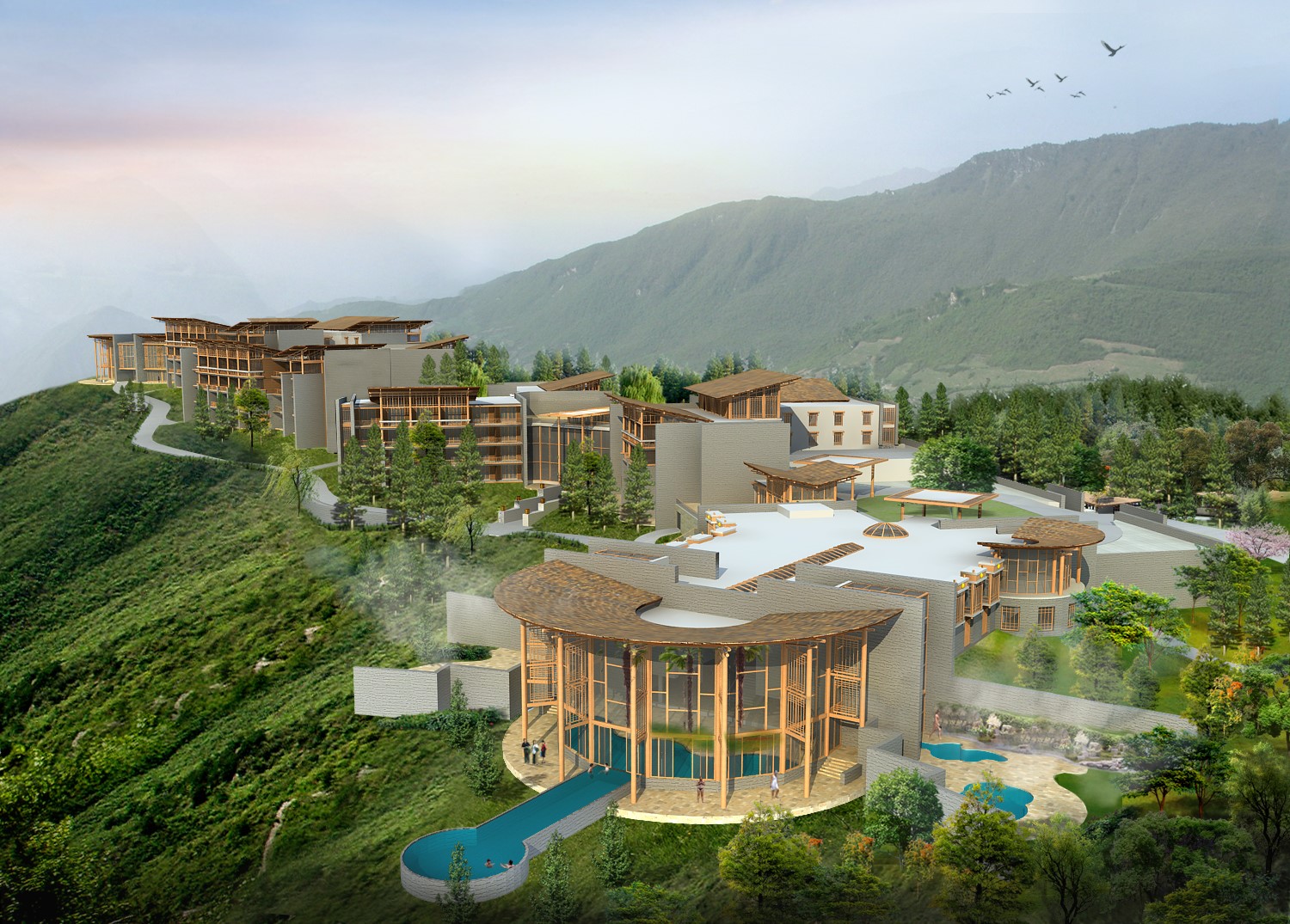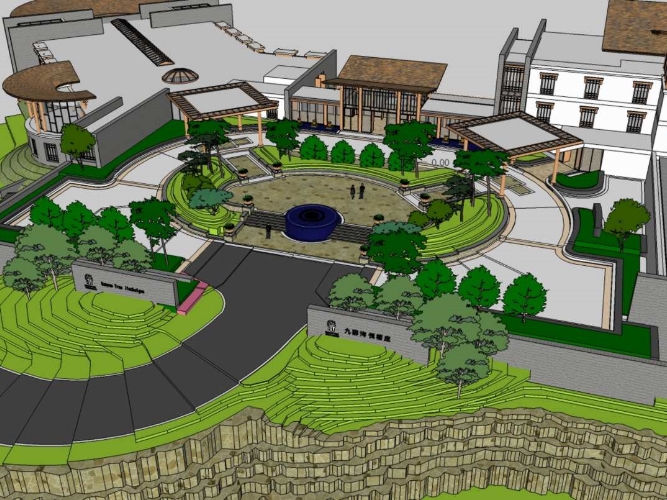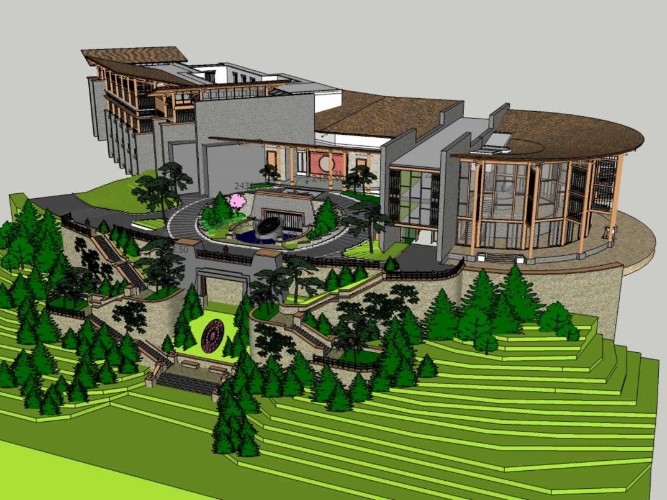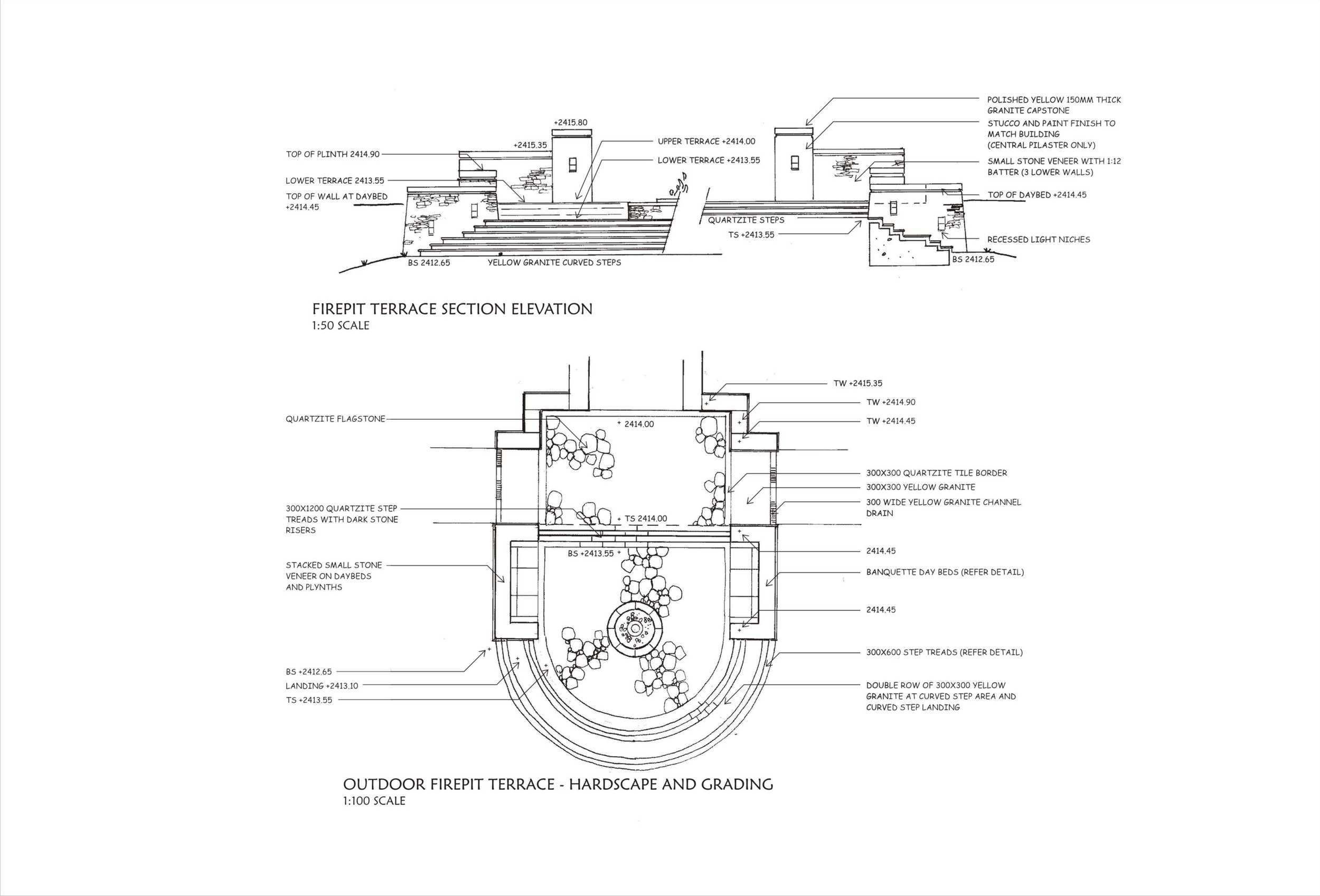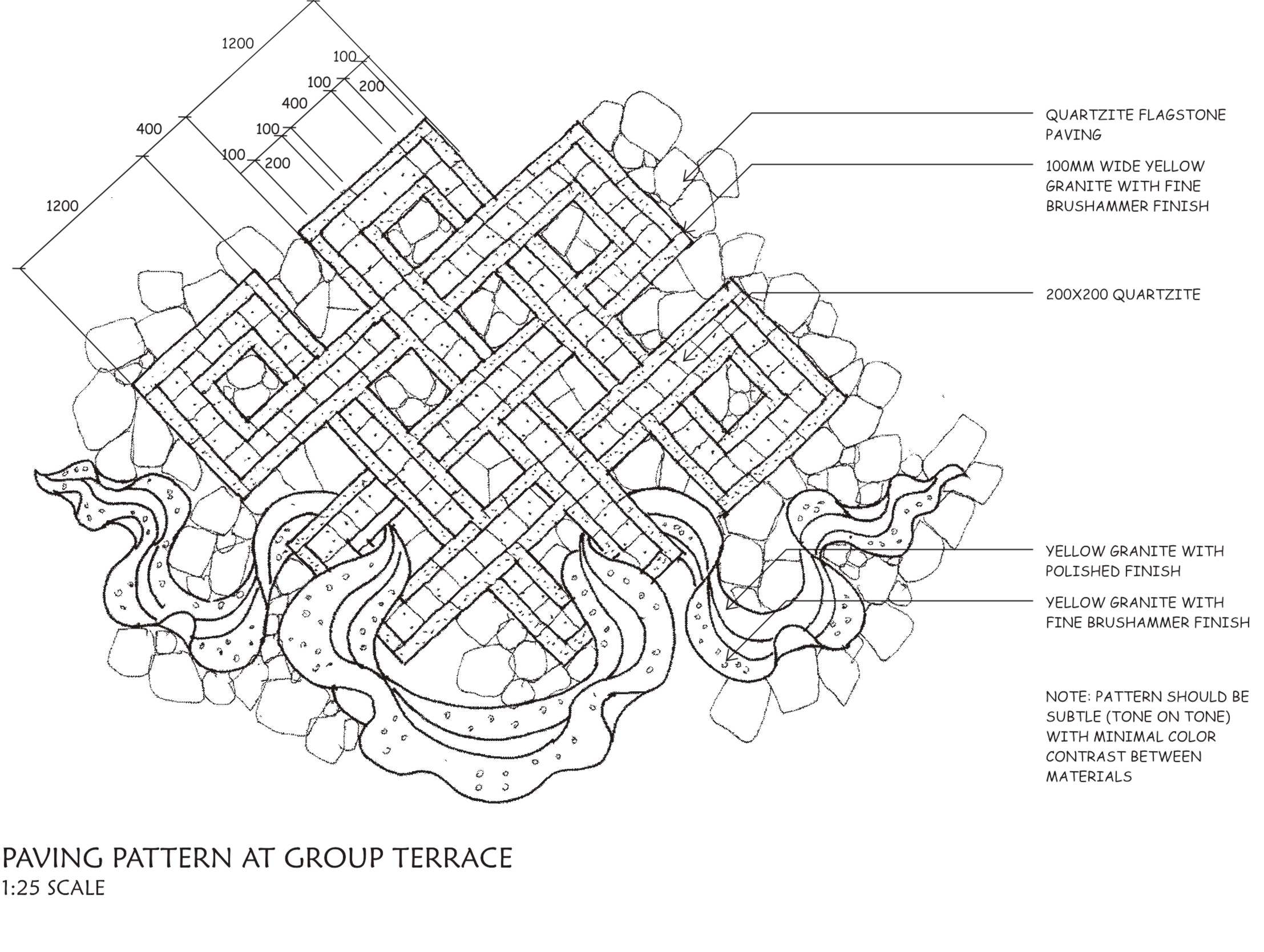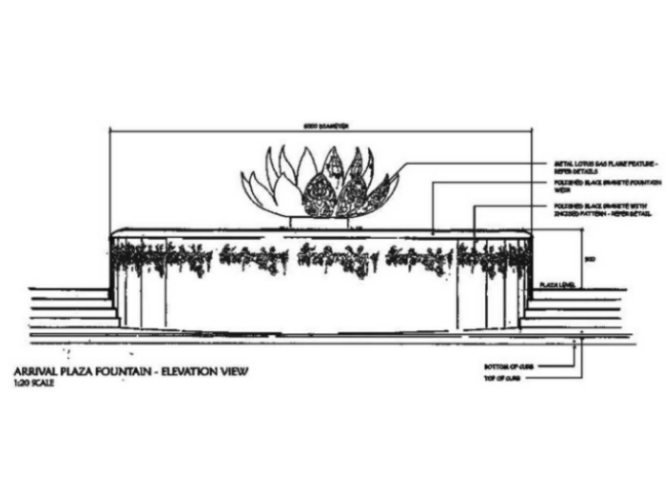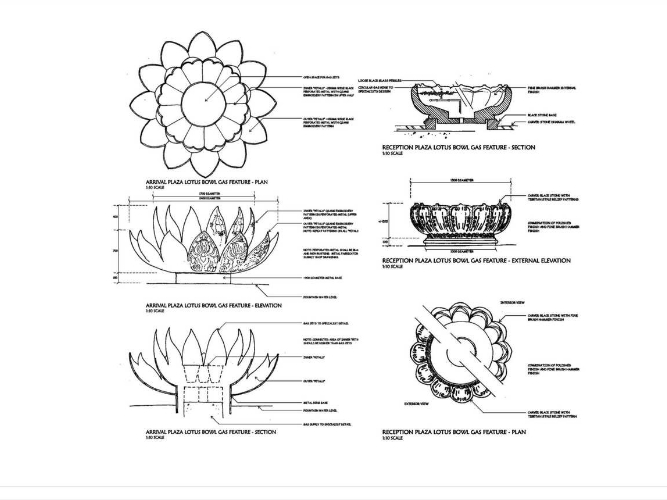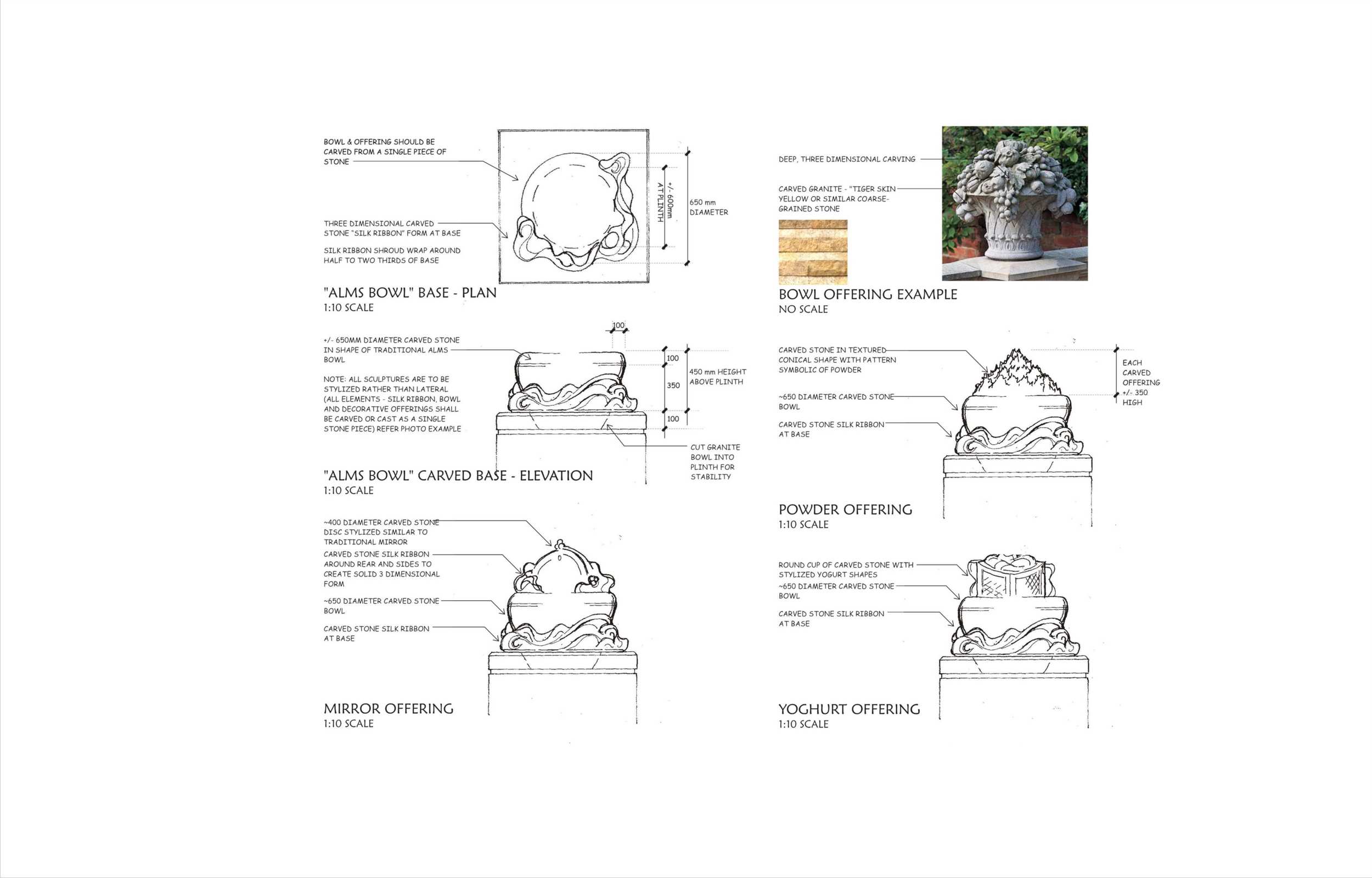Mountaintop Alpine Luxury with Qiang & Tibetan Influences.
Thirteen kilometers of roadway winds up a mountainside to reach The Jiuzhaigou Banyan Tree Resort & Villas. Perched at the edge of a steep cliff, the Banyan Tree is the focal point of the Jiuzhaigou Wonderland Resort and the most luxurious resort hotel in the Huanglong / Jiuzhaigou National Park region.
Built at an elevation of 2500 meters in the Minshan Mountains of Sichuan, the hotel includes a 221 key main building and 125 lowrise guest suites and villas which step down the site's steep slopes and are carved into the hillsides.. A yar-round resort in a mountainside setting required a plant palette primarily of native plants and the green roofs of the guest wings feature a mix of alpine native species and hardy alpine plants. Trees are primarily conifers - Fir Trees, Pine trees and Junipers, as most deciduous trees are dwarfed at this altitude. Native shrubs are the primary source of autumn color, with winter berries of Pyracantha and native Sichuan Pepper attracting wildlife. Complimenting the very naturalistic native palette are collections of Rhododendron species native to the mountains of Sichuan in several sheltered areas and a display of orchids native to nearby Huanlgong Valley in a central courtyard.
During the daytime, the scenery is spectacular ... but at nighttime, the site's remote location allows little more than the night sky to be viewed. A rustic alpine garden with White Birch Trees and pine trees sits immediately outside the main dining areas, where they can be illuminated for viewing in the evening or when the freezing mist moves in and coats the planting with hoarfrost.
The character of the resort is strongly influenced by the artistic traditions of the two minority groups that have lived in this region for thousands of years - the Qiang people and Tibetans. The Qiang are renowned for their colorful embroidery and the Tibetans for jewelry. Themes from Juizhaigou Valley's spectacular natural scenery are also used as decorative motifs.
Patterns inspired by Qiang embroidery are used to decorate light fittings, panels and balustrades; and Qiang filigree patterns patterns are cut into the perforated metal leaves of the flame feature at the hotel's arrival plaza. "Cloud" and "Fire" motifs are expressed in cobblestone paving patterns. Carved stone "alms bowls" feature stylized auspicious offerings atop stone pilasters near stairways and planter walls. At the project's main retaining wall carved bas-relief feature stylized imagery of local scenery.
Due to the altitude, most landscape recreational amenities are passive - outdoor terraces with firepits for conversation; small viewing terraces for hot drinks and an elevated terrace framed by Chinese Table Pines for destination weddings, or specialty dining.
The resort is scheduled to open in 2015.


